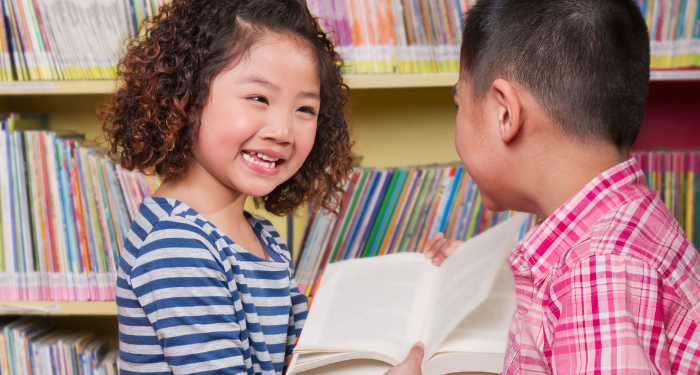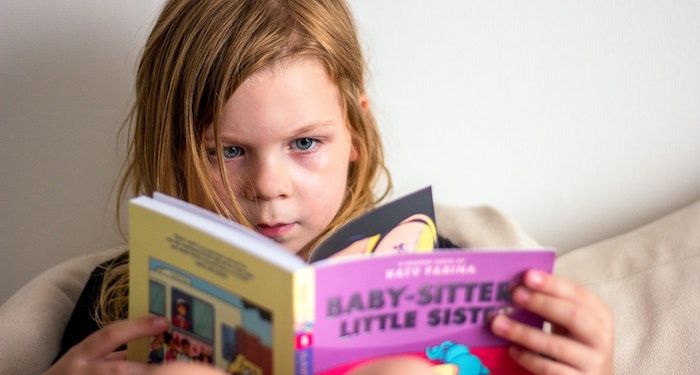When I was a kid, I devoured books during the summer. Growing up in rural Canada, I lived outside and did all the things that Canadian kids did, but I also read a ton. I was obsessed with books set in the Forgotten Realms world and would beg my parents to take me to the bookstore, the nearest one being over an hour’s drive away, to pick up a book with the money I had made mowing lawns. I would then sit in our treehouse and read for as long as I could.
This sounds like I’m trying to paint some idyllic childhood Canadian experience, but the reality is reading during the summer is extremely important. Reading during the summer is the most important activity kids can do in relation to their learning when they return to school.
Research dating back 50 years shows that a lack of reading during that time can lead to a two-month loss of reading achievement, specifically in children from lower-income families.
I’ve written before about great summer reading programmes and what to do when a teen tells you they hate reading. All of these things can help combat the summer reading slump. Today, I will provide a few more tips when it comes to keeping those kids reading over the summer and falling in love with reading for pleasure so that both their minds and their brains are fresh when it’s back to school time.
Talk Positively About Reading
This seems straightforward; however, in a school setting, reading is often seen as a punishment. Students in detention are often asked to sit and read while they whittle away the time. Students are told to “go get a book” — as in, a fictional book — if they’ve forgotten their textbooks or other material needed for the class. I have seen firsthand the negative impact this can have on the kids’ perception of reading for pleasure. Also, reading is often connected to homework for kids, which might as well be poison.
Reading must be approached in a positive manner. One way to do this is to read aloud to kids, no matter what age they are. There is a huge misconception that when kids leave elementary or junior high, they don’t enjoy being read to. I read aloud to teens daily in my role as a school librarian, and I am here to say that they secretly love it, even if they won’t tell you as much.
If you put enthusiasm into reading aloud, you approach novels with glee instead of using it as a punishment, then that behaviour will transfer to the student.
|
|
Be a Reader Yourself
There’s no simpler way to make a reader out of your children — or students, if you are in a school setting — than to be a reader yourself. A massive study out of Cambridge University found that children who read for fun early in life perform better at cognitive tests and have better mental health when they enter adolescence. This includes speech development and improved attention, as well as exhibiting fewer behavioural problems such as aggression, better memory, verbal learning, and so on.
As the adult in their life, if a child never sees you reading, why would they also feel compelled to take up a book? As a school librarian, there is a stereotype that states that we sit around and read all day, which is certainly not the case. However, when we do have library classes in, we spend a little time reading the books that we love. I sit and read with the students. Otherwise, they feel like it’s some sort of punishment that they have to come in and read. Some kids will love it, but others won’t. My job is to ensure both of those columns are approached with enthusiasm about reading.
 |
Let Them Meet Authors
I’m fully aware that this is not doable for everyone. When I grew up, I assumed all authors were millionaires. I never met an author until I became a librarian in the public library system in my late twenties. I’ve been a school librarian for 10 years in the UK, and I can say without a doubt that when students meet an author, it has a huge impact. The National Literacy Trust knows that when students meet an author, they become more enthusiastic about both reading and creative writing.
When an author visits the school, their books will be the number one borrowed book in the school for months to come. We had over 10,000 books borrowed from our school last school year. The most popular book in the school was When I See Blue by Lily Bailey — not a celebrity book or a book by an author who sells millions of copies each year. Lily is a debut, own voices author who wrote a beautiful story about a boy struggling to cope with Obsessive Compulsive Disorder. Lily came to the school, and she had a huge impact on those kids. I sincerely hope that when they are older, they will look back and remember that they had someone special like that come to the school and tell them that their voice matters.
 |
Give Them Choice
Choice is absolutely key when it comes to reading for pleasure. The charity BookTrust outlines key reasons why this is. Choice encourages creativity and helps define us. In my experience, I want the students in my school to see themselves in the books that they read. I want them to connect with the lives of those characters, whether it’s the kind of neighbourhood they grow up in, the religion of the character, the family dynamic — whatever it is, I want them to be able to find themselves. This is a way to tell these kids, some of whom might be struggling, “You are not alone in this world; we have this connection.”
On the flip side of that, I want kids to be able to put themselves in the shoes of other people, people they might have pre-conceived ideas about — especially marginalised groups. Reading for pleasure is the best way to instill empathy into students.
As a parent, teacher, or librarian, we need to be giving kids as much choice as possible. Telling them that certain kinds of books aren’t “real books” or that re-reading is not allowed is a one-way ticket to creating someone who hates reading. Why can’t kids re-read books? I don’t understand the mentality of someone who prevents this from happening. Re-reading is not something I will do personally; however, I know loads of kids who find great comfort in reading the same Wimpy Kid book over and over. My job as a librarian is to say, “hey, here’s a huge list of other books you can read that are similar to Wimpy Kid,” and if they go for those books, great. If they stick with Wimpy Kid, that’s great, too.
 |
Comic Books Count as Reading
I’ve written before about the myths that surround comic books. Parents and teachers often view comic books as a lesser form of literature when the opposite is true. There is loads of research out there to show the value that they possess. The visual aspect of comic books allows readers who struggle to connect to text-heavy novels to have a constant visual reference to go back to. This is absolutely essential when you think about those students who see a book that is an inch and a half thick and get a knot in their stomach because they know they are not going to enjoy it. Not only do comic books offer complex vocabulary, but there are so many amazing comics out there on every topic you can imagine written by a massive, diverse author list. If you are someone who has children at home and they are turning their noses up at reading, get some comic books in your house. Their school library (if they’re lucky enough to have one) should be absolutely brimming with them.
Those are my summer reading tips to keep kids engaged and interested. There are so many reasons to read and so many amazing books out there to explore. I hope this has been useful!
Source : How to Get Students Back Into Reading After Summer Break











